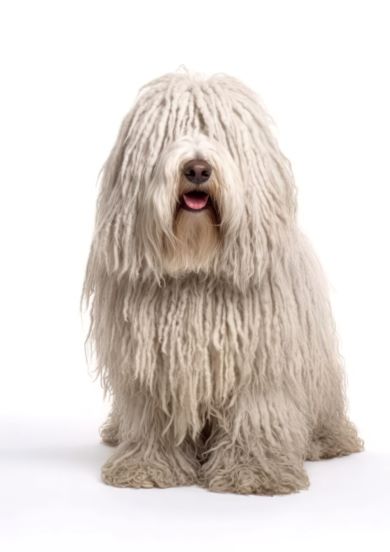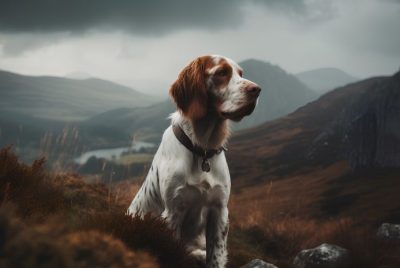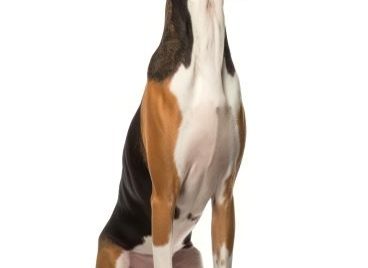Komondor Traits & Characteristics
Are you intrigued by the distinctive appearance of the Komondor and curious about what it’s like to share your home with one of these unique dogs? Here, we delve deep into the world of Komondors, from their history and physical traits to their temperaments and care needs.
Introduction to the Komondor Breed
Origin and History of the Komondor
Originating from Hungary, the Komondor has a long and proud history as a livestock guardian dog. They were bred to think independently and make decisions on their own while protecting their flock. And believe it or not, this is still apparent in the breed’s personality today!
Physical Traits of the Komondor
Size and Weight
As one of the largest dog breeds, Komondors can reach up to 30 inches at the shoulder and weigh anywhere between 80 to 130 pounds. Males are generally larger than females, but all Komondors have a robust and muscular build that’s hidden beneath their unique coat.
Coat and Colors
The Komondor’s coat is undoubtedly its most distinctive feature. With its white, corded coat, a mature Komondor can look like a mop on four legs! This coat helps them blend in with the sheep they were bred to protect and also provides excellent protection against the elements and predators.
Temperamental Traits of the Komondor
Personality
Komondors are brave, independent, and protective, but they’re also known for being calm and quiet at home. They are naturally suspicious of strangers, and while they’re deeply loyal to their families, they need to be properly socialized to ensure they’re not overly protective.
Behavior with Family and Other Pets
Despite their size and serious demeanor, Komondors can be loving and gentle with their human families. They get along well with children and can live peacefully with other pets, especially if they’re raised together from a young age.
Training and Socialization Needs
Due to their protective nature, early socialization and training are crucial for Komondors. They are intelligent and quick learners, but their independent streak means they can sometimes be stubborn. Consistent, positive reinforcement methods work best with this breed.
Health and Lifespan of Komondor
Common Health Issues
While generally healthy, Komondors are prone to some health issues like hip dysplasia, eye problems, and skin conditions. Regular vet check-ups and a balanced diet can help maintain their health.
Care and Maintenance
As large dogs, Komondors need a nutritious diet that can sustain their energy levels. Despite their heavy coat, they don’t require as much grooming as you might think. However, their cords do need regular separating to prevent matting and trapping dirt.
Living with a Komondor: Practical Aspects
Exercise and Activity Levels
Don’t let their calm demeanor fool you – Komondors need regular exercise to stay healthy and happy. Long walks, play sessions, and mental stimulation through tasks and puzzles can help keep them physically and mentally engaged.
Grooming Needs
Komondor’s cords may look high-maintenance, but they actually require less frequent grooming than other breeds. Their cords need to be separated regularly to keep the dog clean and comfortable. Bathing can be a big task, though, as their coat takes a long time to dry.
Conclusion: Is a Komondor Right for You?
Summary of Komondor Traits
Komondors are loyal, protective, and calm dogs with a unique appearance and a strong instinct to guard. They are loving with their families but may be aloof with strangers. Their coat needs some special attention, but they’re not high-maintenance dogs.
Matching a Komondor to Your Lifestyle
If you have the space for a large dog, can provide plenty of exercise and mental stimulation, and are prepared to meet their grooming needs, a Komondor could be the perfect addition to your family. Their calm yet protective nature makes them excellent companions for the right household.
FAQs
1. How big do Komondors get?
Komondors can reach up to 30 inches at the shoulder and weigh anywhere between 80 to 130 pounds.
2. Are Komondors good family dogs?
Yes, Komondors are known to be loving and gentle with their human families, including children.
3. How often should a Komondor be groomed?
Their cords need to be separated regularly, but they don’t need frequent baths. Bathing should be done only when necessary, as their coat takes a long time to dry.
4. Do Komondors require a lot of exercise?
Yes, like most large breeds, Komondors require regular exercise to stay healthy and happy.
5. Are Komondors aggressive?
Komondors are protective and can be aloof with strangers, but they are not inherently aggressive. Proper socialization and training can ensure they are well-behaved.




